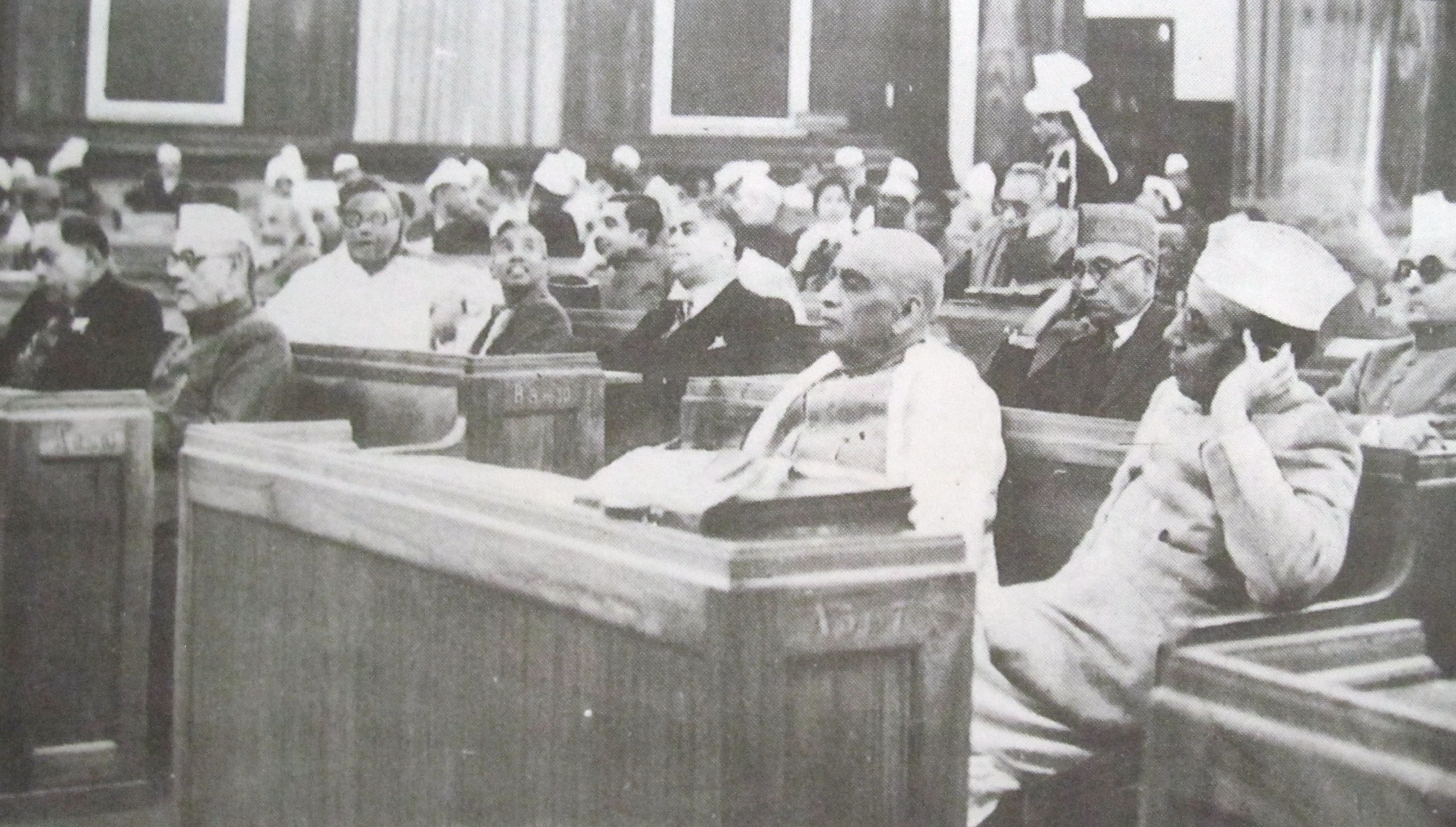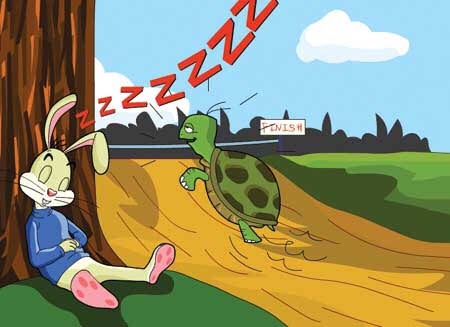
It was on 26th of November, 1949 when the constituent assembly completed and approved the final draft for the new constitution for the newly freed former British Colony. Though the constitution came in force 2 months laters on 26th January, which we celebrate today as Republic day of India to mark the 20 years anniversary of the iconic Lahore session of Indian National Congress, where on the banks of Ravi the demand for Purna Swaraj or Complete Independence was put forward paving the way for the Civil Disobedience Movement. Since then India has upheld the spirit of constitutionalism
India has been blessed to have such visionaries in the constituent assembly. The Chairman of the drafting committee was Dr Bhim Rao Ambedkar. He was a champion and promoter of civil rights in favour of the depressed and backward classes and tribes. A well educated, well spoken and knowledgable lawyer whose far sightedness has been instrumental in shaping the present India, we live in.
The working of Constituent assembly is described by Dr. B.R. Ambedkar in one of his speeches in the Constitution Assembly.
“Looking back on the work of the Constituent Assembly it will now be two years, eleven months and seventeen days since it first met on the 9th of December 1946. During this period the Constituent Assembly has altogether held eleven sessions. Out of these eleven sessions the first six were spent in passing the Objectives Resolution and the consideration of the Reports of Committees on Fundamental Rights, on Union Constitution, on Union Powers, on Provincial Constitution, on Minorities and on the Scheduled Areas and Scheduled Tribes. The seventh, eighth, ninth, tenth and the eleventh sessions were devoted to the consideration of the Draft Constitution. These eleven sessions of the Constituent Assembly have consumed 165 days. Out of these, the Assembly spent 114 days for the consideration of the Draft Constitution.”
The Permanent president of the assembly was Dr. Rajendra Prasad, who later went on to become the first President of India. He has been instrumental in the freedom movements and had been active with Indian National Congress.
“Indeed, it is in the power of this Constituent Assembly to get rid of and demolish the very limitations which have been attached to it at its birth, and I hope that you, ladies and gentlemen, who have come here to frame the constitution of an independent and free India, will be able to get rid of these limitations and place before the world a model constitution, that will satisfy the people of all groups and communities and religions inhabiting this vast land and will ensure everyone freedom of action, of thought, belief, and of worship, which will guarantee to everyone opportunities of rising to his highest, which will guarantee to everyone freedom in all respects.”
The assembly was nothing less than a necklace decorated with jewels like Pandit Jawaharlal Nehru, Maulana Abul Kalam Azad, Sardar Vallabhbhai Patel, Acharya J.B. Kripalani, Smt. Sarojini Naidu, Shri Hare-Krushna Mahatab, Pandit Govind Ballabh Pant, Shri Sarat Chandra Bose, Shri C. Rajagopalachari and Shri M. Asaf Ali. Two hundred and seven representatives, including nine women.
The inaugural session began in New Delhi on 9 December, 1946 in the Constitution Hall (which is now known as the Central Hall of Parliament House) at 11 a.m. with the introduction of Dr. Sachchidananda Sinha (the temporary Chairman of the Assembly and the oldest and most experienced member) by Acharya Kripalani. While welcoming Dr. Sinha and others, Acharyaji said: “As we begin every work with Divine blessings, we request Dr. Sinha to invoke these blessings so that our work may proceed smoothly. Now, I once more, on your behalf, call upon Dr. Sinha to take the Chair.”
Pt. Jawaharlal Nehru proposed the Objectives Resolution with his everlasting words:
“We are on the threshold of a new era. This resolution is a message defining our intentions as to what we propose to do. This is a contract with the millions of Indians in particular and the people of the world in general. This is in the nature of an oath that we mean to keep …. This resolution steers between two extremes (of saying too much and too little) and lays down only certain fundamentals which I believe no group, no party and hardly any individual in India can dispute …. We are all in our respective spheres party men belonging to this group or that and presumably we shall continue to act in our respective parties. Nevertheless, times come when we have to rise above party and think of the nation, think sometimes of even the world at large of which our nation is a great part.”
It was this resolution that took the shape of preamble and guided the ideology of constitution makers and thus the Constitution.
Some facts about the constituent assembly
- The members of the Constituent Assembly assembled for the last time to append their signatures to the Constitution on 24 January, 1950. In all, 284 members actually signed the Constitution. All members signed three copies of the Constitution namely, the English print version and the calligraphic version in English and Hindi.
- The total expenditure incurred on making the Constitution amounted to Rs 64 lakhs.
- The front cover of the Indian Constitution was designed by the renowned Bengali painter, Nandalal Bose. The preamble-page was designed and decorated solely by renowned painter Beohar Rammanohar Sinha of Jabalpur. 14. The original Constitution was handwritten and calligraphed by Prem Behari Narain Raizada.
- The original Constitution of India is kept in a special helium-filled case in the Library of the Parliament of India.
- The Constitution-makers had gone through the constitutions of about 60 countries and borrowed necessary provisions from them.
- Constituent Assembly adopted Hindi written in Devanagari script as the official language of the Republic of India on 14 September 1949. Every year Hindi Divas is celebrated on 14 September.
- On November 17, 1947 the Constituent Assembly for the first time met as a Legislative Assembly. G. V. Mavlankar was elected as the speaker of the assembly. Later he became the first Speaker of Lok Sabha when it came to existence in 1952. Jawaharlal Nehru described him as ‘Father of Lok Sabha’.
- The Speech known as ‘Grammar of Anarchy’ was made by Dr. B.R. Ambedkar in Constituent Assembly on November 25, 1949, while presenting the Indian Draft Constitution for approval.
Yes, it is true that India has had her share of problems, imperfections and thus controversies. But, we are still able to uphold the largest democracy of this world standing on the bases of our constitution. And if we have to thank anyone for this, it is to our forefathers: the constituent assembly, whose farsighted vision has guided India through many ups and downs preserving the trinity of Equality, Liberty and Fraternity across the country.

